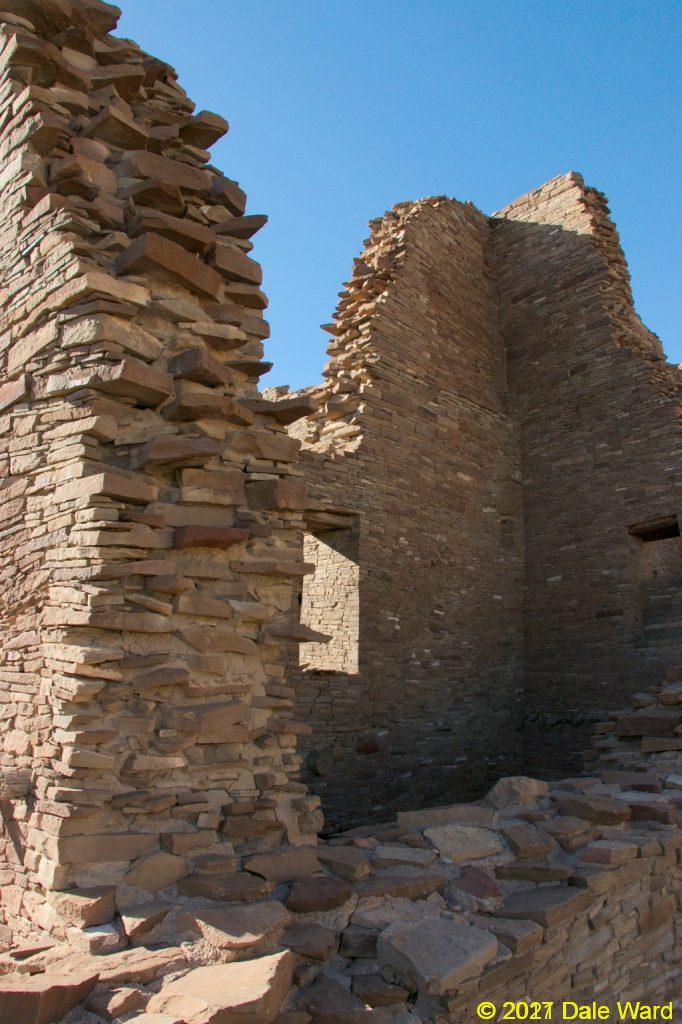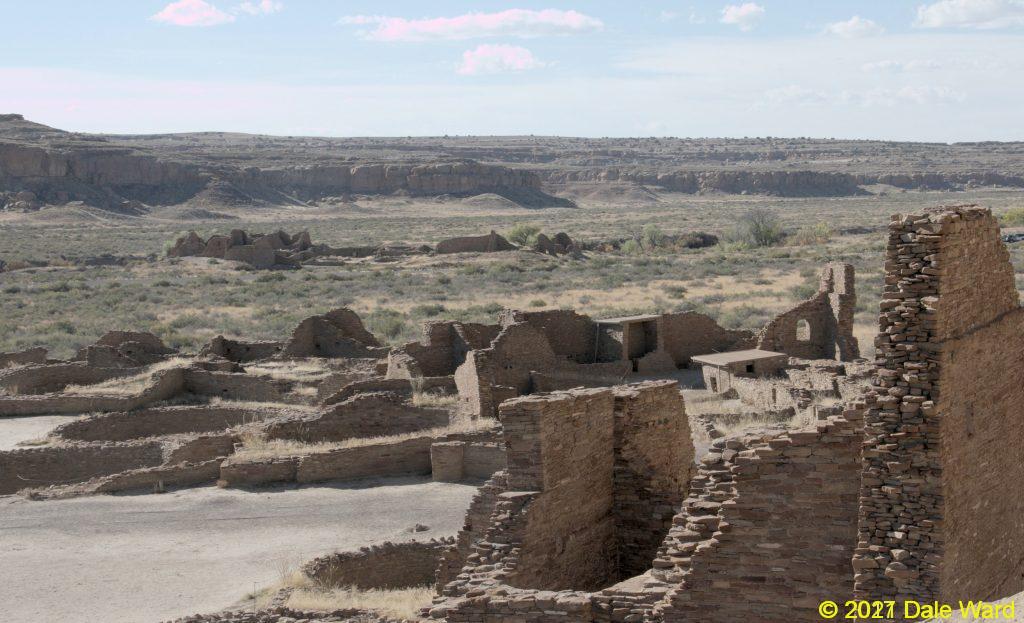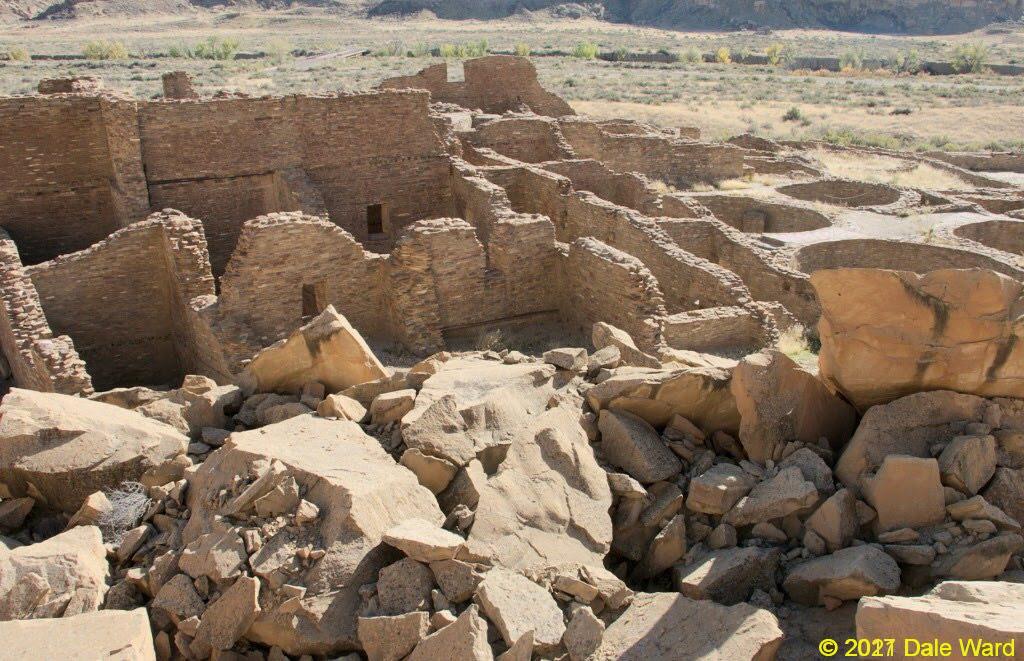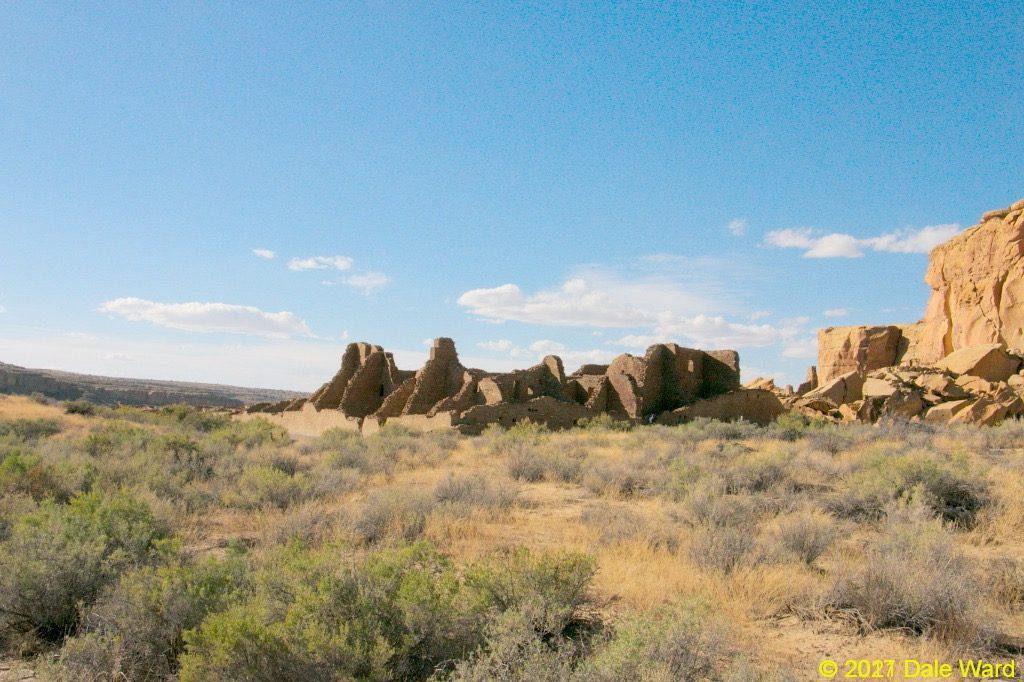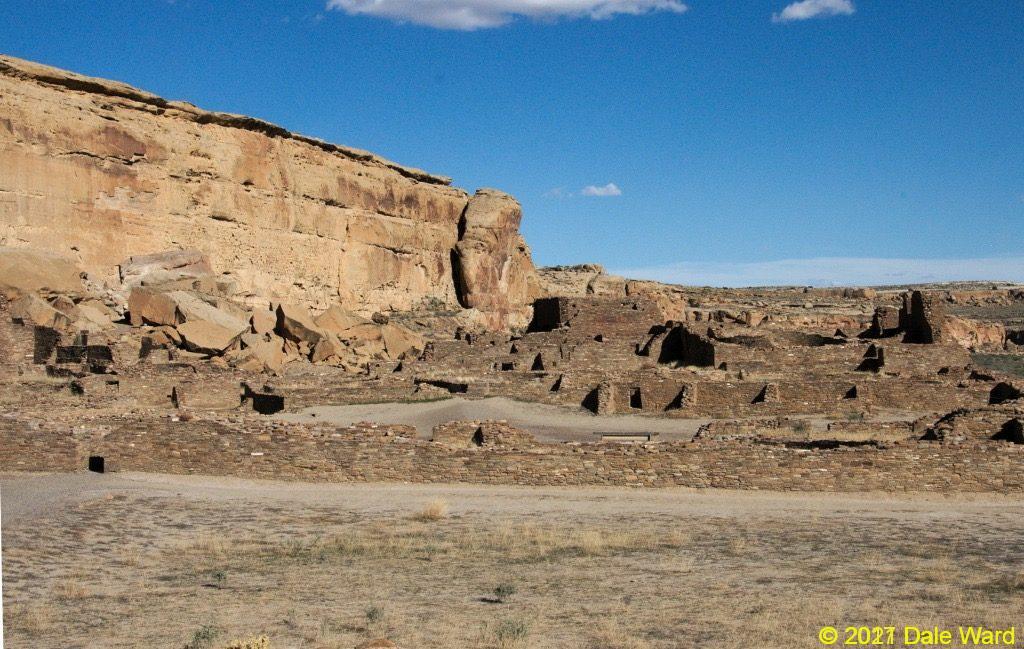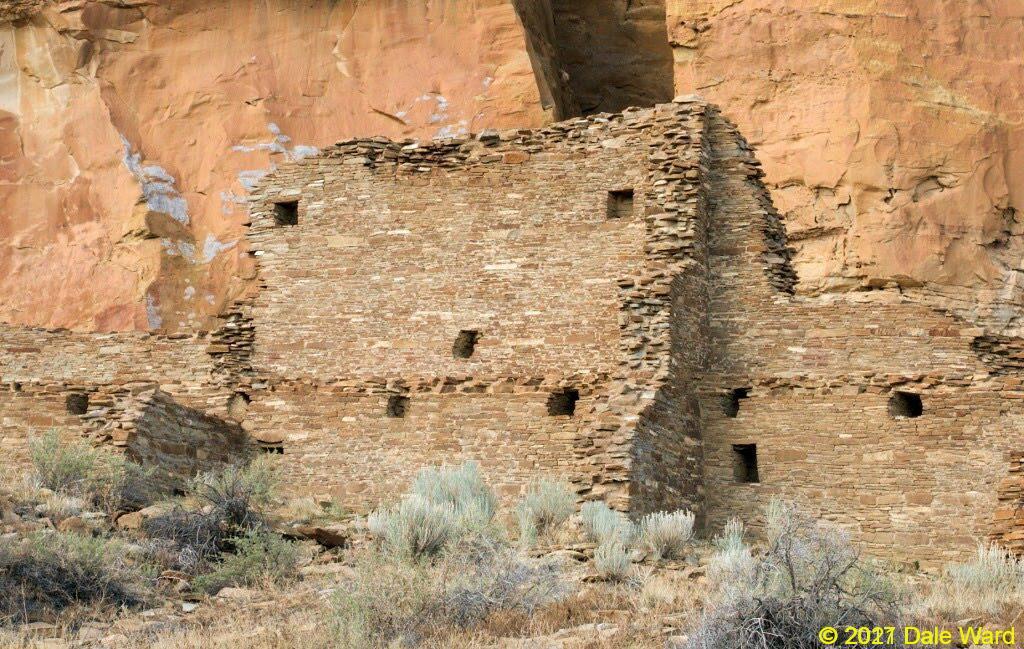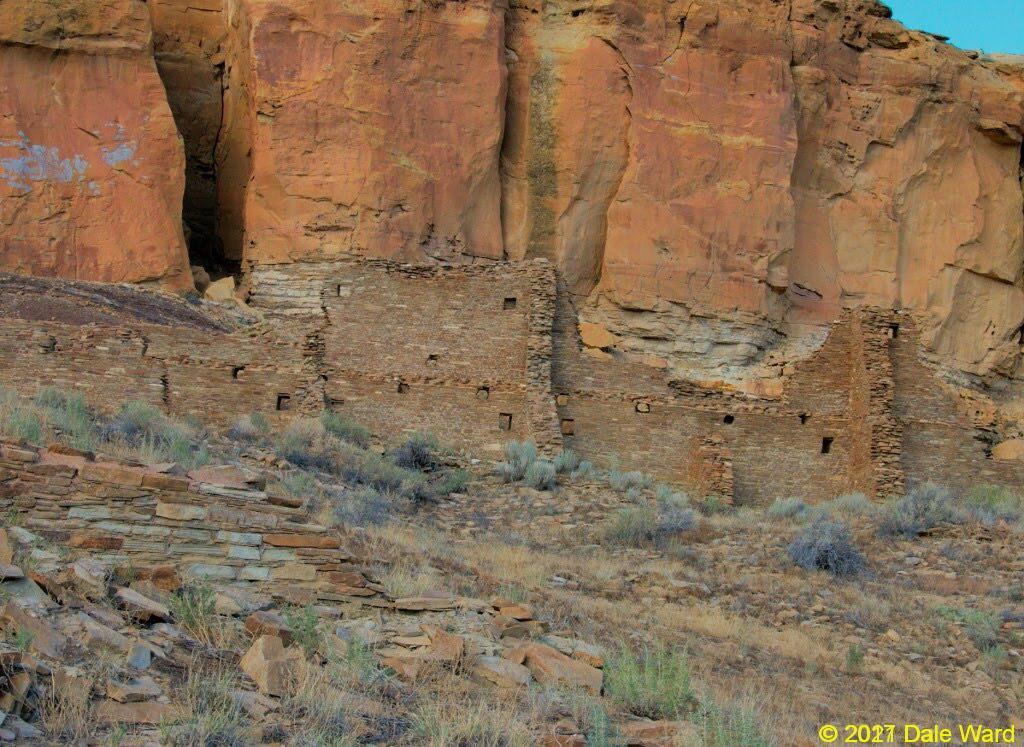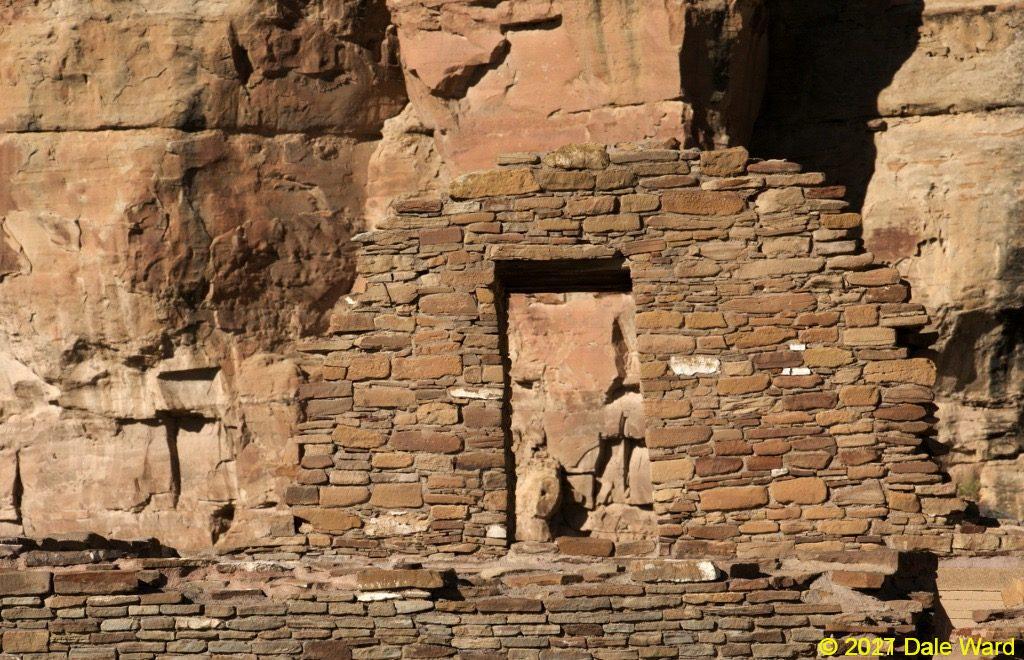Chaco Canyon
A visit to see Chaco Canyon's ruins
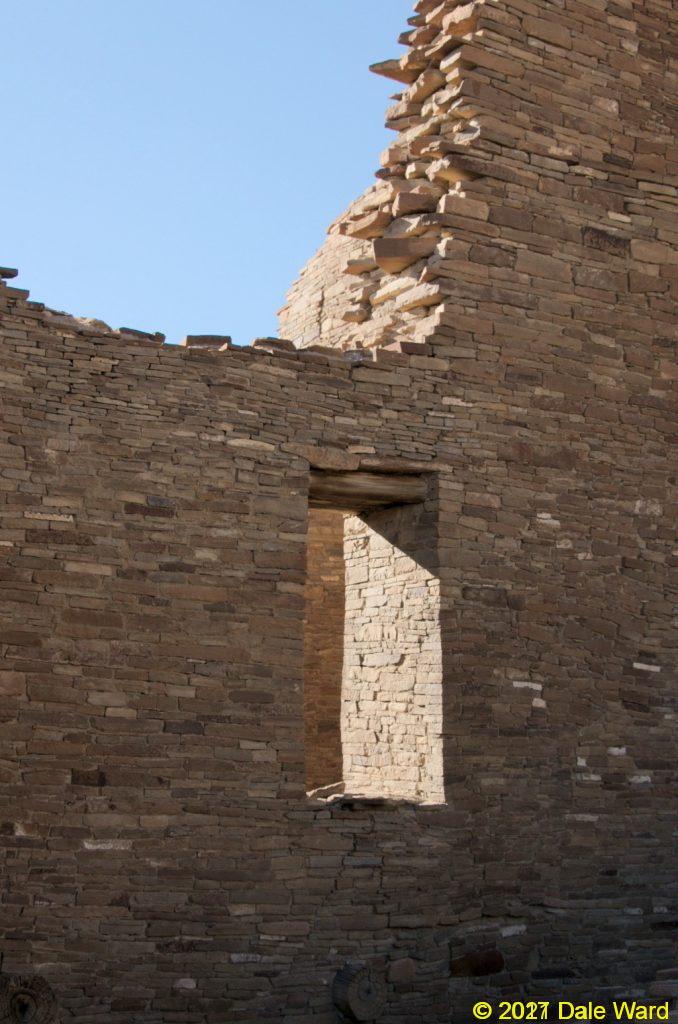 Window at Pueblo Bonito, Chaco Canyon
Window at Pueblo Bonito, Chaco Canyon
I had been intending to see the ruins at Chaco Canyon for a long time, and a few weeks ago I finally made it out there. It was well worth the trip.
The road out to Chaco Canyon was a bit rough. At first it didn’t seem too bad, but then I saw this road sign:
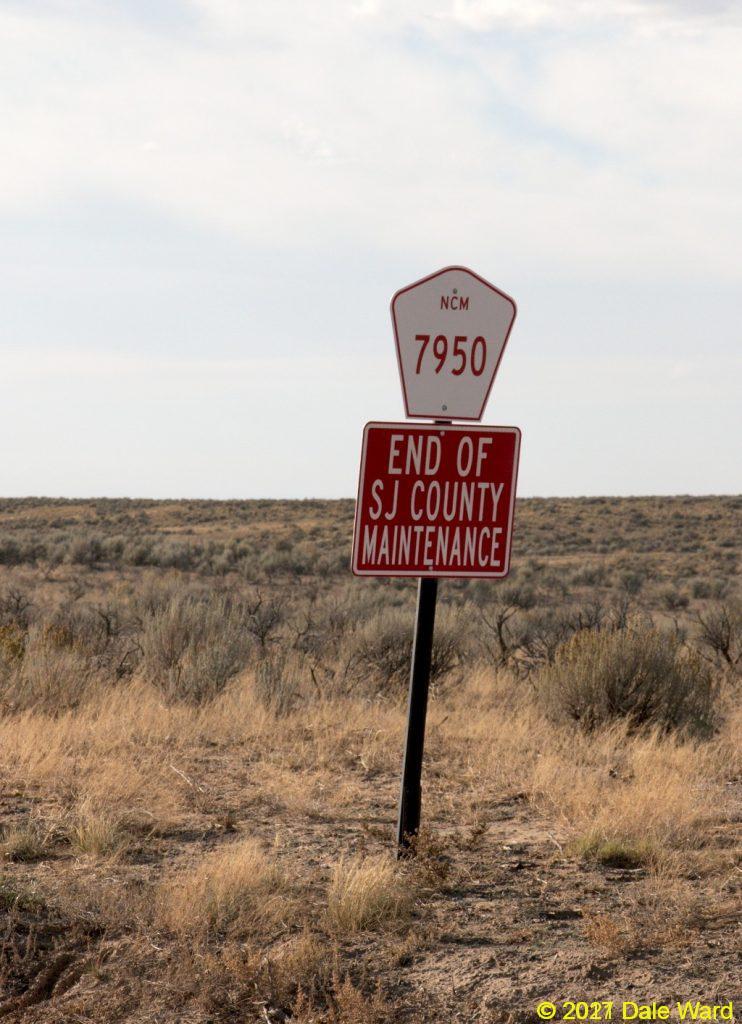 This is never a good sign to see.
This is never a good sign to see.
Mmmph. “Anything that happens beyond here is not on us”, is how I read this.
The road stayed okay for a while after the sign, then got worse. It was hard adobe clay with deep, sharp edged potholes in it. Quite bumpy, for the most part, and I would not want to try to drive on this road when it was wet. I’m betting it turns into clay soup.
The crossing over one of the washes also looked like it had seen some high-flow days.
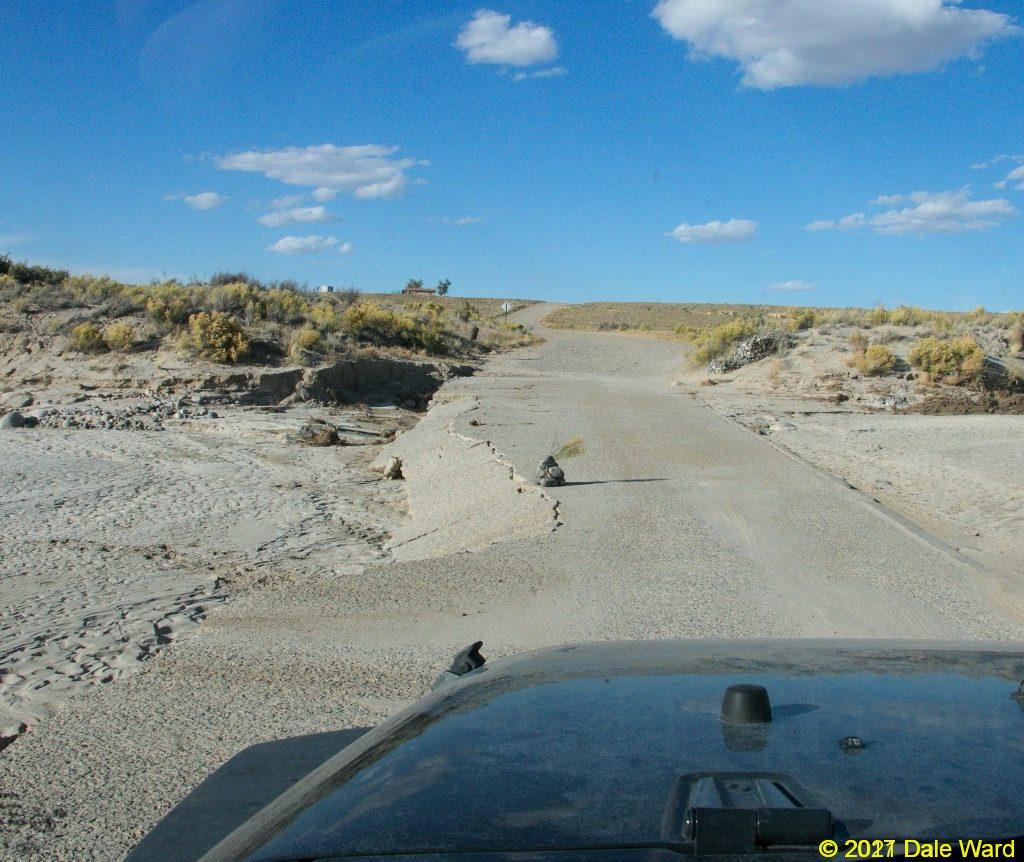 Would not want to do this in the rain
Would not want to do this in the rain
It was a pretty slow drive out to the park headquarters, mostly because of the passenger cars on the road. The drivers seemed to be in a state of shock over the potholes. In the rain…hmm…well…I’ll bet a tow truck would make a pretty good living by driving up and down this road on rainy days.
The canyon itself was beautiful, surrounded by tall sandstone cliffs. It would be worth a trip out there just to see the canyon, even if there weren’t ruins.
But the ruins…wow.
There are seven or eight large groups of ruins. I only had time to visit two of these - Pueblo Bonito and Chetro Ketl. Unlike Mesa Verde, at Chaco you can walk through most of the ruins, rather than just viewing them from a distance.
The ruins are spectacular. Their scale is hard to believe. There were between 200 and 500 separate rooms in the larger buildings, some of which reached five stories high. I read that approximately 200,000 trees were used in the construction of the buildings here. These trees would have been hauled in from about 70 miles away.
Chaco was occupied from roughly 850 AD to 1250 AD. It seems to have been a political/religious capitol for the San Juan Basin.
Some people, such as Stephen Lekson, speculate that Chaco was one of a series of capitols for the Anasazi in the San Juan Basin, along what Dr. Lekson calls the ‘Chaco Meridian’. The first was Chaco Canyon, which was superseded by a new capitol at Aztec, New Mexico. Aztec was, in turn, superseded by Casas Grandes (Paquimé), in Northern Mexico. These sites are all along a single meridian, approximately 108 degrees West.
He speculates that these successive capitols were populated by what were, effectively, kings and queens. Royal families.
There are Navajo stories about Chaco that seem to support this notion. One is the story of the Great Gambler.
The Great Gambler was a man who came from the South (perhaps Mexico/Central America?) and enticed the locals into various games of chance.
He took all of the people’s possessions in these games.
Eventually, the people had nothing left to bet - so they bet themselves, their freedom.
The Great Gambler won these bets, too, and so owned the people who lost.
The people’s friends came, and also bet themselves, in efforts to free their friends.
These people lost to the Great Gambler, too.
Soon the Great Gambler owned everybody. He forced them to build the Great Houses of Chaco Canyon.
Many years later, the people revolted, and Chaco fell.
Another supporting piece of information for the idea of royal families - years ago, researchers had found about a dozen bodies buried in one of the rooms of Pueblo Bonito. The bodies were buried in a ‘royal’ fashion - with fancy grave goods and signs of great ceremony.
These bodies had been carefully buried over the span of about 330 years.
The researchers performed DNA work on some of the bodies buried in Pueblo Bonito, and the results showed that the people were related, by their mother’s side of the family. So it appears that there was, indeed, something resembling a ruling family, at least at Chaco.
The proposed tie to Mexico and Central America is supported by various trade goods - parrots, feathers, chocolate.
Also, researchers found a relatively large number of skeletons of people that had an extra toe. There were also petroglyphs in the surrounding cliffs of feet and hands - with with extra digits.
This reverence for extra digits was something that was shared by the Mayans. This is yet another tie between Mexico/Central America and Chaco Canyon.
Interestingly, one of the bodies found at the Castle Rock Pueblo massacre site also had an extra toe.
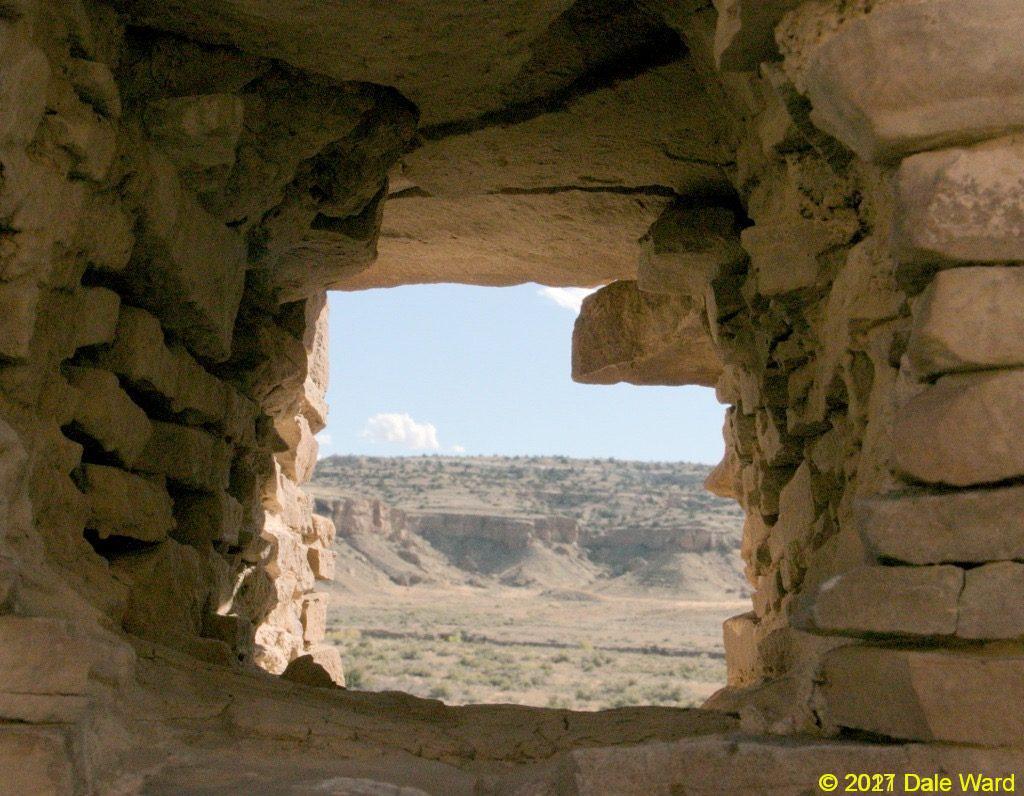 Looking through a window at Chetro Ketl
Looking through a window at Chetro Ketl
This Central American ‘ruling class’ may have been responsible for the wave of violence in the Four Corners area around 1280. Dr. Lekson and others speculate that the violence may have been, essentially, ‘death squads’ sent out from Aztec as it declined politically. Trying to force the locals into line.
It’s an interesting, if disturbing, idea. The timing matches.
Sources:
Childs, Craig. 2008. House of Rain: Tracking a Vanishing Civilization Across the American Southwest. Back Bay Books.
Iaconangelo, David. 2017. Why scientists say a matrilineal elite ruled New Mexico’s Pueblo Bonito.
Lekson, Stephen. 2009. A History of the Ancient Southwest.
Sidder, Aaron. 2016. Extra Fingers and Toes Were Revered in Ancient Culture.
